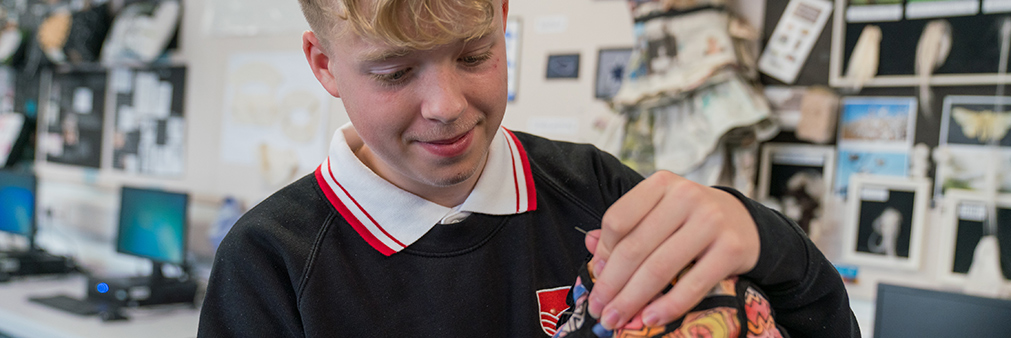
Design Technology
Curriculum Vision
‘Design is not just what it looks like and feels like. Design is how it works’
- Steve Jobs -
Our vision for Design and Technology students at Chapel High School is that they see the world and its problems through other people’s eyes, look beyond the obvious and come up with sensitive and creative responses. We nurture them to be environmentally, morally and socially aware, and to explore design solutions that will make the world a better place.
Knowledge and skills
We want our students to feel brave enough to experiment through a range of different specialisms. We encourage our students to problem solve innovatively and imaginatively, using a combination of traditional and technological skills whilst working collaboratively and with fluidity to fulfil design needs, solutions and products. Prototype experimentation and iterative modelling are fostered across a wide range of manufacturing techniques and it is under this inclusive umbrella that we hope today’s students become tomorrow’s designers and engineers.
To illustrate this our students in years 7 to 9 rotate projects which vary in materials, processes and design. They construct products manufactured from timber, metal, polymers and textiles. We aim to incorporate CAD/CAM where applicable and foster graphic and design skills as well as thorough research and evaluation methods.
Those students who study with us in years 10 and 11 build on this by developing products for real clients. They extend their practical skills further to work intuitively and independently on projects which are changed annually by the exam board covering consumer needs such as keeping fit and active, outdoor living and preparing for an emergency.
Context
We aim to provide our students with the necessary skills to become adaptable citizens, employees and employers and to recognise the opportunities which Design and Technology can bring both locally and beyond the hills of the High Peak.
You can find our year 7 curriculum here.
You can find our year 8 curriculum here.
You can find our year 9 curriculum here.
You can find our year 10 and 11 curriculum here.
Years 10 and 11
In years 10 and 11, students opt to study Design and technology to GCSE. The main areas of study are:
- Core technical principles
- Specialist technical principles
- Designing and making principles
Core technical principles: Students work towards gaining a thorough theoretical knowledge to apply in the exam alongside extensive design and practical lessons which develop skills for the final controlled assessment portfolio and product. Specialist technical principles and designing and making principles work through a range of materials and construction techniques through research, design, development and manufacture of innovative projects. Students are encouraged and given the opportunity to develop individual ideas and understand the need for iterative development and critical evaluation.
Examination Information
| Qualification | GCSE Design and Technology |
|---|---|
| Board | AQA |
| Syllabus number | 8552 |
| Website link | www.aqa.org.uk |
| Assessment details | 50% terminal exam sat at the end of Year 11 50% NEA non examined assessment coursework portfolio controlled in Y11 |
| Recommended coursebook | AQA GCSE Design and technology ( 9-1) |
| Recommended revision guides | CPG Design and technology, available through parent pay |
| RECOMMENDED WEBSITES | technologystudent.com mr-dt.com bbc.co.uk/bitesize/examspecs/zby2bdm |

